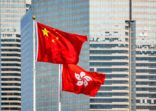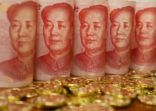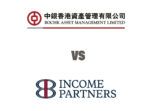Andy Seaman, Stratton Street Capital
Seaman co-manages the Stratton Street Renminbi Bond Fund, which invests in bonds in Asia and the Middle East and hedges all positions into RMB. He expects recent moves to open China’s financial industry to benefit his strategy.
China’s authorities will be forced to further relax the restrictions on capital flows out of China, according to Seaman, to balance the inflows of foreign investment that are expected as A-shares and Chinese domestic bonds are incorporated into global indices.
The process of A-shares inclusion is well underway, and inclusion of bonds is expected to follow. Bloomberg announced in March that it will add Chinese RMB-denominated bonds to the Bloomberg Barclays Global Aggregate Index, in a gradual process, starting in April 2019.
Capital outflows should also come from the relatively obscure RMB Qualified Domestic Institutional Investors (RQDII) scheme, which allows domestic investors to invest in offshore RMB-denominated products. It was launched in 2014, but very few quotas were then assigned and it was effectively dormant, until this month, when China’s central bank published new rules for the programme. The announcement follows the revival, in April, of QDII, a similar scheme but for offshore hard-currency investments.
As controls on outbound flows relax, Chinese institutions and wealthy individuals will want to diversify investments by investing offshore. Seaman told FSA that he believes many of them will invest in their own currency or hedge investments back to RMB to avoid currency exposure.
RMB hedge strategy
The Renminbi Bond Fund was launched in 2007 on the premise that the renminbi was at that time deeply undervalued and that over time it would become one of the world’s strongest currencies.
The fund invests in government and investment-grade corporate bonds of Asian countries, including the Middle East. Countries the firm deems highly indebted are excluded. The fund held 36 positions at the end of March, relatively few for a bond fund.
The largest exposure is to Qatar and United Arab Emirates bonds, which Seaman said the firm’s models find grossly mispriced and offering good returns for relatively little risk.
While currency hedging in most cases carries a cost for the fund, hedging hard currency bonds into renminbi is a source of extra returns, he said. Seaman estimates that the difference between the interest rates in China and the US, which the fund taps into through currency hedging, adds around 1.5% in return per year. The bonds in the portfolio yield on average 4%.
China bond risks
Seaman sees the biggest risks to China and its currency stemming from the US. One would be a potential mishandling of interest rates by the US Federal Reserve, leading to a recession. The other would be a trade war between the two countries.
Seaman believes both scenarios are unlikely. But if they do happen, he believes China will, by comparison, do better than the US. He believes a weaker economy in the US, due to recession or as a result of a trade war, would depress the dollar and strengthen the renminbi.
Since investment-grade bonds would in such case do better than high yield, “our renminbi bond fund, strangely, will probably benefit in these ‘outlier’ risk scenarios,” he said.
Stratton Street Renminbi Bond Fund


















